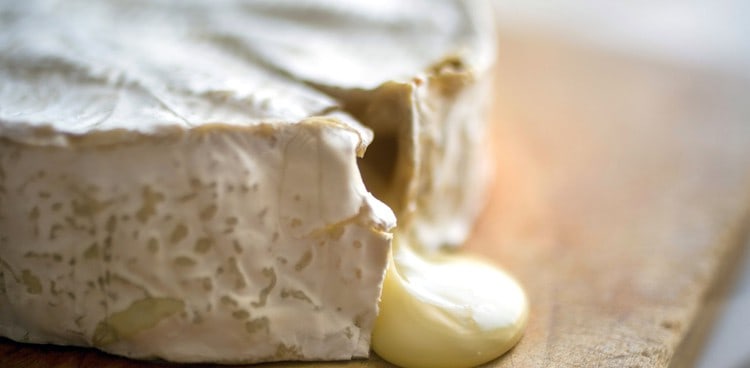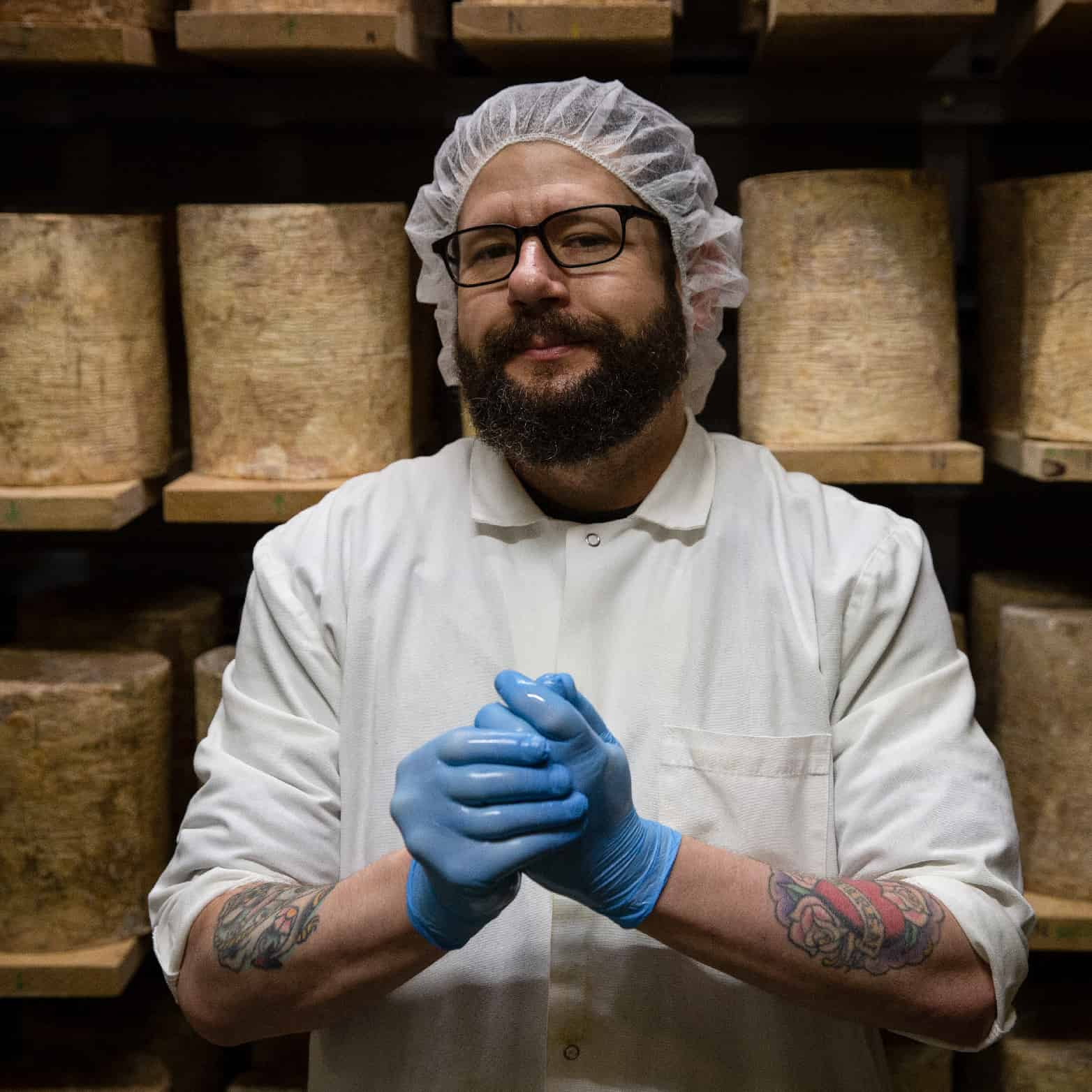Learn the science behind bloomy rinds with an affineur.
As the French literary realist Gustave Flaubert reached the end of his life, he quipped to his niece, “Sometimes, I think I’m liquefying like an old camembert.” This oozing trait of camembert, and all its bloomy-rind kin, develops as the cheese ages: a mature camembert or brie becomes runny and exudes its paste. This delicious phenomenon is caused by the rind of the cheese—the “bloom” of pillowy white mold that grows on its surface.
When a round of camembert is first made, its paste is springy and rubbery. There is no rind, the outside of the cheese looks like the inside, and it holds its shape nicely. But during the early stages of the cheese make, before being transformed into curd, the milk is inoculated with the spores of a particular species of mold. Under the right conditions, when the surface of that young camembert has become dry enough and the surrounding temperature warm enough, the mold spores will start to germinate. The mold will grow long filaments called hyphae (pronounced HI-fee), which then form into an entangled network called mycelia (mi-SEE-lee-uh). When left undisturbed, the network grows and the mold blooms across the surface, forming the rind.
Like mushrooms and yeasts, molds are members of the kingdom Fungi and can reproduce by forming spores—a packet of DNA that can grow into a new cell. The mold on camembert and its white-rind relatives is a species known as Penicillium camemberti, so named for the cheese from which it was first isolated. When P. camemberti undergoes sporogenesis (reproducing by creating spores), it forms specialized regions, known as conidiophores, at the end of its hyphae. When viewed under a microscope, they resemble a fan or flower. A healthy rind of camembert will appear as a field of flowers under magnification, hence the term “bloomy rind.”
Like most molds, P. camemberti is aerobic. It needs oxygen to flourish, which is why it is found on the surface of the cheese rather than in its interior. As it grows, it exudes enzymes that break down both the protein (proteolysis) and fat (lipolysis) of the paste below, creating the essential nutrients the mold needs to survive. Protein is rich in nitrogen and hydrogen. As it is broken down, these atoms form molecules of ammonia (NH₃), which lend the camembert its pungent aroma. The ammonia travels through the paste and reduces the overall acidity of the cheese, making it less tangy. The combination of deacidification and the degradation of protein releases some of the moisture that is trapped in the paste, forming the cream line.
The liquefaction of camembert is certainly a function of its age, as noted by Flaubert, but it relies heavily on the bloom of its moldy rind to spread and run. It is the ooze of age that makes this cheese a delight. As the great connoisseur Frasier Crane once retorted when complaining about cheese: “It was camembert. If anything, it wasn’t runny enough.”
Josh Windsor
Josh Windsor is an affineur and the Senior Caves Manager at Murray’s Cheese in New York City, where he actively nurtures and ages the Cave Aged line of specialty cheeses including the 2019 American Cheese Society (ACS) “Best in Show” winner Stockinghall Clothbound Cheddar and the 2022 World Cheese Awards “Best American Cheese” winner Greensward. Always curious about how cheese ages, Josh is an active member of the community biology lab, Genspace, where he explores the microbial world of cheese rinds. Josh shares his love of all things dairy by teaching cheese appreciation, science, and history at Murray’s Cheese and sensory evaluation at Cornell University’s cheese short courses.





